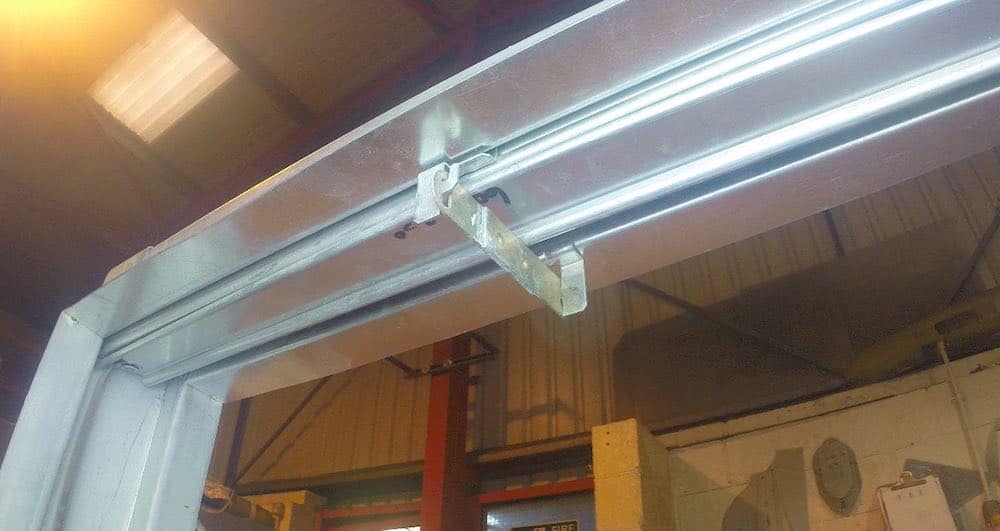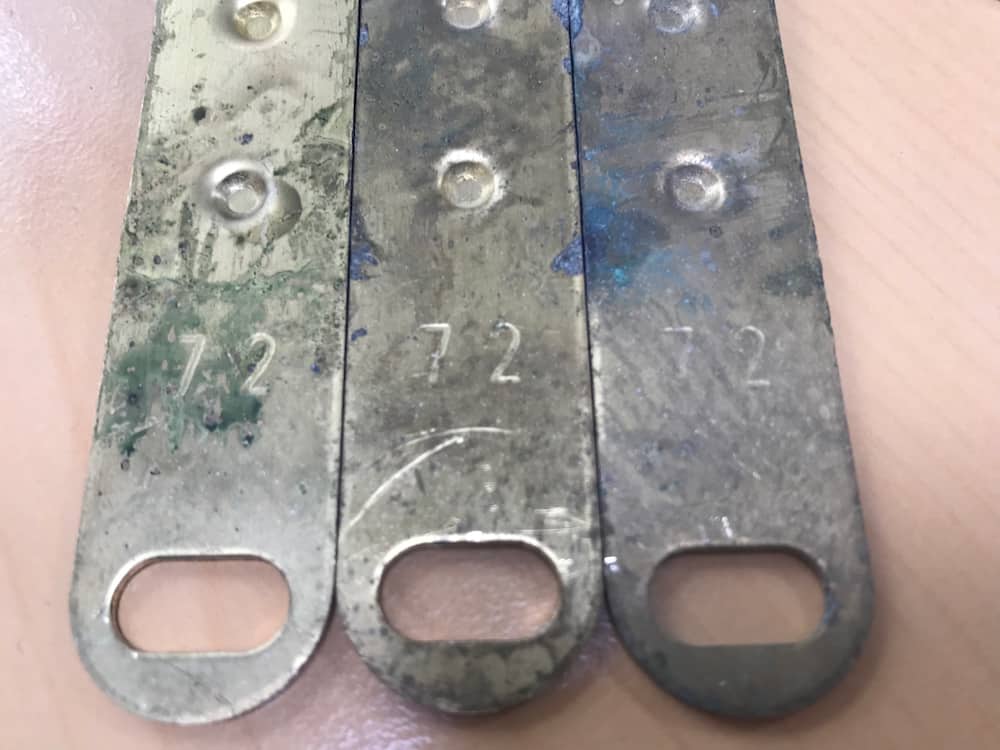
We talked about Fire Damper Maintenance in previous article here, but over the last few years, we have found that there has been a huge growth in the demand for Fire Damper testing and Inspection too.
A Fire Damper is a passive fire protection product that is integrated into ductwork, as part of a ventilation, heating or air conditioning (HVAC) system. Their role is to stop the transmission of fire within a ducted system in the event of a fire.
With a ducted system running through a building, if there were no fire dampers, a fire could pass through the duct and ‘jump’ across fire-resistant walls and floors. They are therefore an essential tool within any building emergency to protect lives and property and to maintain the integrity of exit routes from buildings.
They are activated in one of two key ways. Thermally or electrically.
The most common trigger uses a thermal element that activates at a given temperature above ambient. With a fusible link, when the temperature is reached, the alloy that holds the two halves together melts and the opening is triggered. The alternative temperature based option is with a bi-metallic strip that, when triggered, releases a pin to activate the system.

An alternative option for activation is via electrically controlled dampers that are activated by smoke or fire detectors and use this electronic trigger to activate a solenoid and close their shutters.
Upon activation, a powerful spring closes the shutter (it’s a little like a roller shutter) that stops the flow of fire or smoke.
There is also a smoke damper variant which as the name implies, is designed to stop the spread of smoke through ductwork. These are essentially an ‘air-tight’ version of a fire damper.
With any life-saving system, there’s a legal requirement to maintain it.
In the UK with Fire Dampers, this is governed by BS9999 which is a long and hugely unwieldy standard, that stretches across over 400 pages, 170,000 words and over 1,000,000 characters. Whilst that’s only around a third of the size of Tolstoy’s classic War and Peace, it’s a daunting read on any subject, but when the subject matter is a UK Standard and lives depend on its correct implementation, it’s vital that the legislation is both interpreted and delivered correctly.
The standard was first written in 2008 and subsequently updated in 2017 to reflect the changes in building design and construction. In truth, it’s likely to undergo further major changes when the full impacts and lessons from the horrific Grenfell Tower Disaster are digested and plans to prevent future tragedies are agreed.
Buried deep within the standard are the regulations for fire damper testing as well as how they need to be both deployed and subsequently maintained. Here are just three of the 100+ mentions of the Fire Dampers within the standard.
“Where a ductwork system serves more than one part of a compartmented or fire separated protected escape route, smoke detector operated fire dampers should be provided where ductwork enters each fire separated or smoke separated section of the escape route.
The smoke detector operated fire dampers should be caused to close if smoke is detected. Any ductwork passing through an accommodation space should be fire-resisting, i.e. the ductwork should be constructed in accordance with method 2 or method 3.
Where a service duct enclosure is provided with a level of fire resistance in accordance with BS 8313, and the service duct itself is also used for ventilation purposes, any grille or opening through the enclosure for ventilation purposes should be protected by a fire damper.”
The legislation also details the testing procedures for every aspect of the fire detection and prevention system. There are daily checks for the most accessible of items such as fire doors and a visual test of the fire control panel. There are recommended weekly checks the cover alarms and extinguishers and other life-critical elements and then six monthly checks which begin to inspect in some detail the fire doors and the fire mains to ensure they will operate as expected in the event of an emergency.
And then it comes to the annual tests which are, as you would imagine, the most rigorous.
The wording on this section leaves very little room for manoeuvre and for us, is nigh on impossible to misinterpret when it says:
In addition to the daily, weekly, monthly and quarterly checks recommended arrangements should be made for annual inspections and tests of the following to be carried out by competent persons, for any defects to be logged and the necessary action taken, and for certificates of testing to be obtained:
a) fire detection and alarm systems;
b) self-contained luminaires with sealed batteries, if more than three years old;
c) sprinkler and drencher systems;
d) smoke ventilators and smoke control systems;
e) evacuation lifts;
f) fire-fighting lift installations;
g) fire hydrants;
h) fire mains;
i) portable fire extinguishers;
j) hose reels.
Stocks of foam concentrate or solution should be checked annually and replenished as necessary.
This is further reinforced in the following section 43.3.
Planned inspection, maintenance and testing procedures should be established and used to ensure that all fire protection systems can operate effectively when required. Arrangements should be made for all fire safety equipment, installations and systems (including fire detection systems, automatic suppression systems, door control mechanisms, smoke control systems, evacuation and fire-fighting lifts, emergency lighting, standby power systems, escalators, and all passive fire protection provisions) to be inspected and tested on a regular basis by a competent person. Alterations, additions, repairs or modifications to services and equipment should be carried out only by competent persons.
Perhaps the only question that can arise from this is what constitutes a competent person?
Again, the standard explains this in section 3.23
Competent Person
A person, suitably trained and qualified by knowledge and practical experience, and provided with the necessary instructions, to enable the required task(s) to be carried out correctly.
The Kimpton Maintenance team have experience in every aspect of fire detection, prevention and maintenance. With many of the team having over 30 years experience, you know you are in safe hands and competence is absolutely assured.
Our team will carry out a comprehensive Fire Damper test across the entire system and produce a complete report on the condition and operability of your fire dampers. This testing will highlight if anything is wrong that could cause them to fail at the critical moment and prevent the spread of smoke and fire throughout your building.
This testing could save lives.
The testing will also highlight any components that could and should be replaced as part of an ongoing planned and preventative maintenance programme. We offer this as a service to hundreds of clients throughout the Northwest and in our experience regular servicing will not only maintain the systems to be able to perform optimally, it will save money and potentially lives in the long term. It’s only when a system fails at a critical time that you may realise you should have done more, earlier.
The good news for you as a business is that it isn’t anywhere near as expensive as you may think. Fire Damper Testing -Particularly as part of a planned and preventative maintenance programme can be relatively inexpensive.
The comprehensive report is accepted by insurers and does ensure that you are legally compliant with the BS9999 standards.

If you are an employer and you have people on your non-domestic premises, it is your responsibility. It doesn’t matter whether you own the building, sub-let the building or are merely a tenant, it is your responsibility to ensure the safety of your employees and visitors to your premises.
This is covered in the slightly less wordy, but every bit as daunting ‘Regulatory Reform (Fire Safety) Order 2005’ within Article three.
Article three defines who is the responsible person for the premises when it states.
“In order to meet the obligations under EC Directives, wherever there is an employer they will continue to be responsible for the safety of their employees. In order to achieve the necessary broader coverage of the legislation beyond workplaces, the definition has been extended.
Therefore, where there is no employer in any premises, the occupier or owner of the premises is the responsible person.”
It goes on to say
“The responsible person will be responsible not only for the safety of employees, but for that of any person (a “relevant person”, as defined in article 2) lawfully on the premises, or in the immediate vicinity of the premises and at risk from a fire on the premises.
Article 3(a) provides that in a workplace the employer is the responsible person if the workplace is under the employer’s control. This reflects the Framework Directive (89/391/EEC), which imposes unconditional obligations on employers by having the ultimate responsibility for the safety of their employees in case of fire, even where others have obligations in respect of the premises.”
The time to act is now. Fire can start at any time in almost any location. Fire prevention and maintenance of fire prevention systems is your responsibility as an employer. If you fail to maintain your fire prevention systems you will be in breach of the law and could well be in breach of your insurance requirements too.
It’s hard to imagine the potential consequences if there is an emergency if you have not maintained your fire prevention systems. And it’s all preventable with a simple fire damper testing and maintenance programme from the Kimpton team.
It may seem daunting, but our experienced team will take all of the pain away and ensure that yourself and your team are safe. We will ensure your systems are legally compliant and able to spring into action when needed. A properly functioning system will prevent the spread of smoke and fire, when and if they are required.
Call the Kimpton team now. Your partners in fire prevention and maintenance. 0151 343 1963 and ask for the Fire Damper Testing Team.
If you would like to discuss any of our services, please call 0151 343 1963 or complete the form below and we will be in touch shortly.